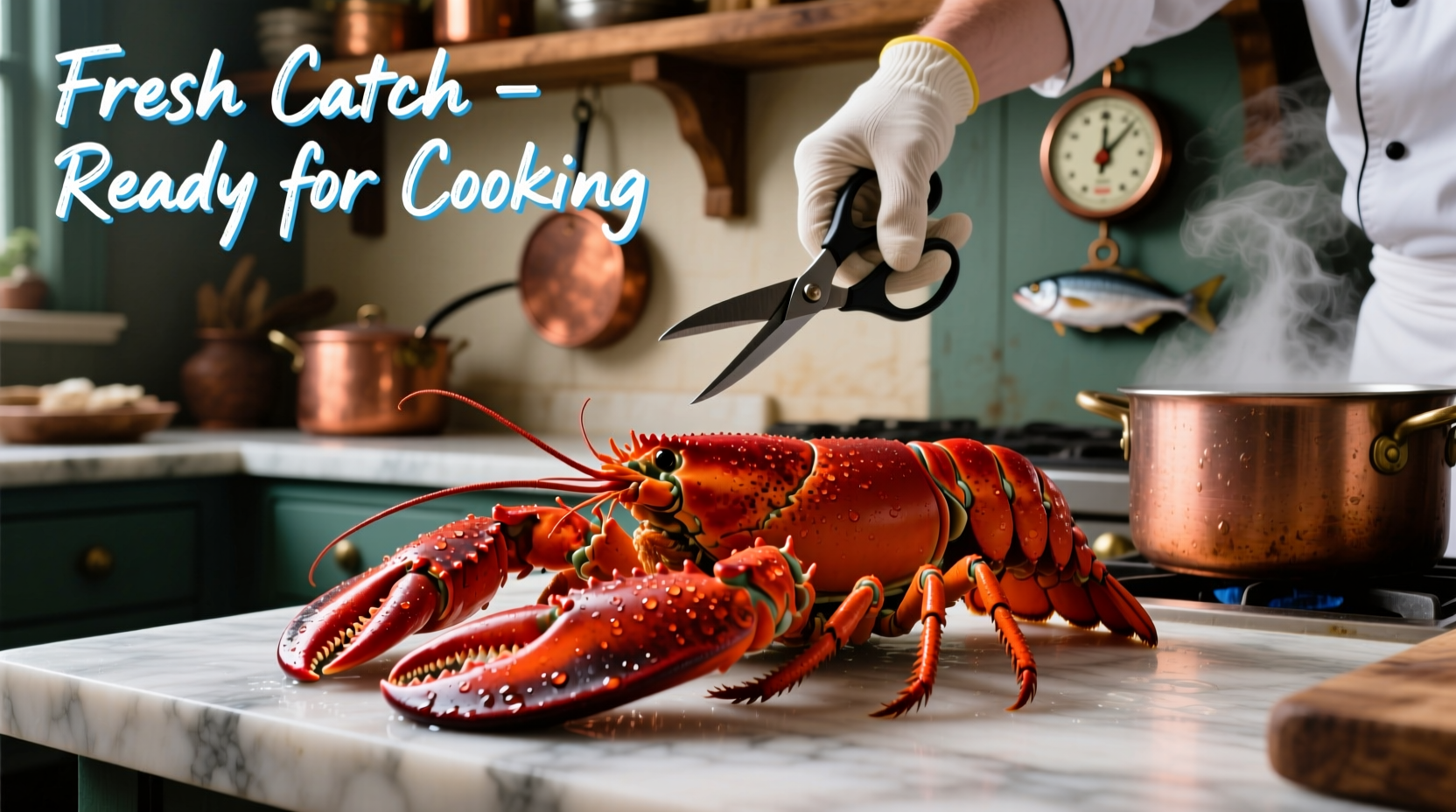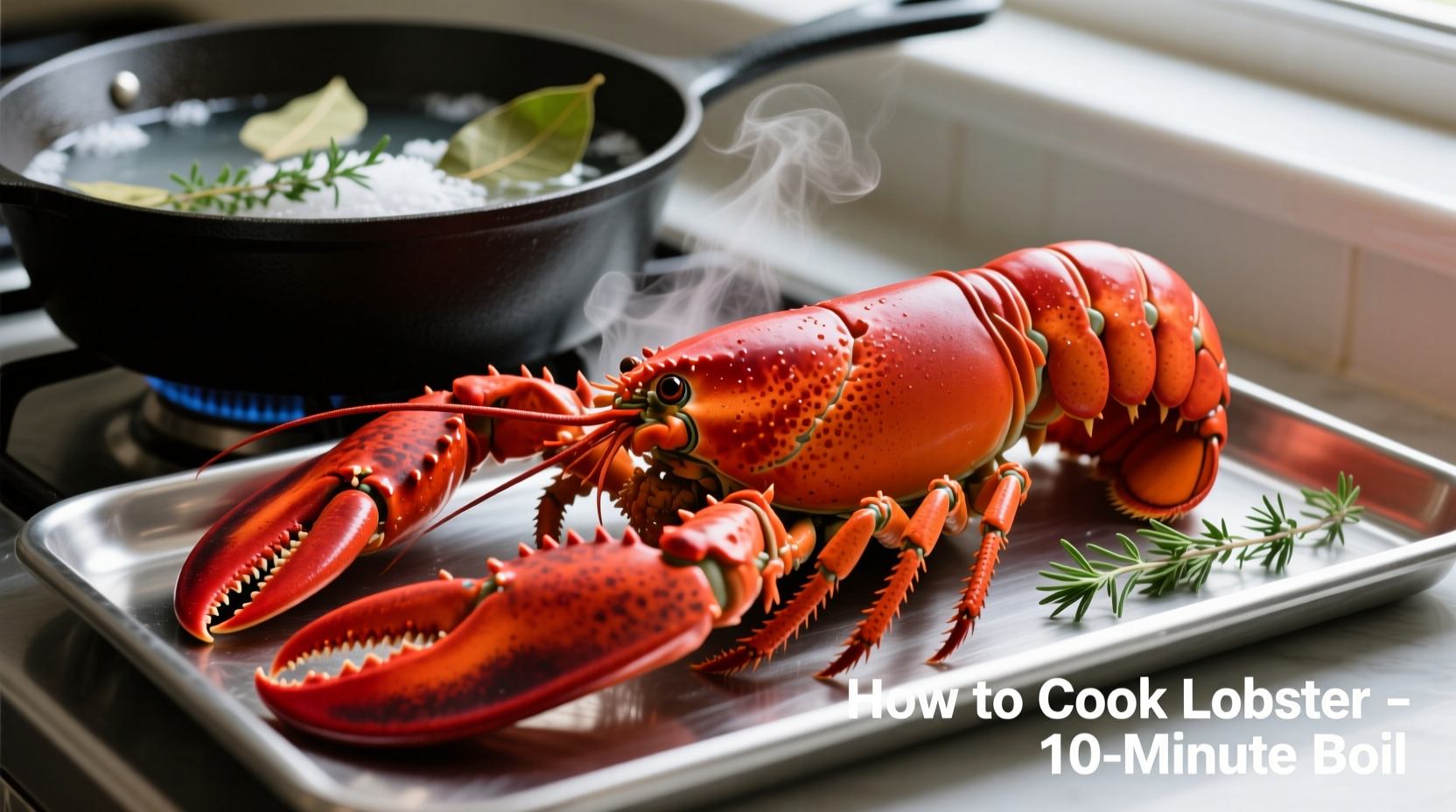Have you ever wondered why restaurant lobster tastes so perfect while your home attempts often turn out rubbery or unevenly cooked? The secret isn't just in the technique—it's understanding lobster's delicate protein structure and how heat transforms it. As a chef with years of experience handling premium seafood, I've perfected methods that guarantee tender, sweet lobster every time, whether you're cooking for a special occasion or a casual weeknight dinner.
Selecting Your Lobster: Quality Starts at Purchase
Before you even think about cooking, choosing the right lobster makes all the difference. Look for live lobsters that are active and responsive—when lifted, their claws should clamp shut firmly and their tails should curl tightly under their bodies. Avoid lobsters with slow movement or limp tails, as these indicate poor health and potentially compromised meat quality.
Size matters more than many realize. For most home cooks, 1–1.5 pound lobsters offer the best balance of meat quantity and tenderness. Larger lobsters (over 2 pounds) contain more meat but can be tougher if not cooked precisely. The U.S. Food and Drug Administration recommends purchasing seafood from reputable dealers who maintain proper cold chain storage to ensure freshness and safety.
Humane Handling and Preparation
Many home cooks skip proper preparation, leading to inconsistent results. Before cooking, keep lobsters refrigerated and damp with seaweed or a moist towel. Never store them in fresh water or ice directly, as this can kill them prematurely and affect meat quality.
When ready to cook, handle lobsters carefully behind the claws. For boiling or steaming, most chefs recommend placing the lobster headfirst into the cooking liquid to ensure the quickest, most humane process. If you're uncomfortable with this method, freezing the lobster for 15–20 minutes first will sedate it without affecting meat quality.

Boiling vs. Steaming: Which Method Wins?
Both boiling and steaming produce excellent results when executed properly, but they serve different purposes in your culinary repertoire.
Perfect Boiled Lobster (The Classic Method)
Boiling delivers consistent results and is ideal for beginners:
- Fill a large pot with enough water to cover lobsters, adding 1/4 cup salt per gallon of water
- Bring to a rolling boil
- Gently add lobsters headfirst using tongs
- Cover immediately and reduce heat to maintain a gentle boil
- Cook for 8–12 minutes (8 minutes for 1-pound, add 1 minute per additional 1/4 pound)
The Seafood Health Facts organization confirms that proper boiling time ensures both food safety and optimal texture, as undercooked lobster can harbor harmful bacteria while overcooked meat becomes tough.
Steamed Lobster (For Maximum Flavor Preservation)
Steaming preserves more of lobster's natural sweetness:
- Add 2 inches of seawater or salted water to a large pot
- Insert a steaming rack
- Bring to a vigorous boil
- Place lobsters on rack, cover tightly
- Steam 10–14 minutes (10 minutes for 1-pound, add 1 minute per additional 1/4 pound)
| Lobster Weight | Boiling Time | Steaming Time | Internal Temperature |
|---|---|---|---|
| 1 pound | 8 minutes | 10 minutes | 140°F |
| 1.25 pounds | 9 minutes | 11 minutes | 140°F |
| 1.5 pounds | 10 minutes | 12 minutes | 140°F |
| 2 pounds | 12 minutes | 14 minutes | 140°F |
Critical Timing and Temperature Guidelines
Timing is everything with lobster. The protein structure begins to toughen immediately after reaching the ideal internal temperature of 140°F. Use an instant-read thermometer to verify doneness—insert into the thickest part of the tail. The meat should be opaque white throughout with no translucent areas.
Pro tip: Remove lobsters from heat 1–2 minutes before they reach full doneness, as residual heat will continue cooking them. Immediately plunge into an ice bath if serving cold, or let rest briefly if serving hot.
Serving Your Perfectly Cooked Lobster
Traditional melted butter is classic, but elevate your presentation with these professional touches:
- Clarified butter with a squeeze of lemon and fresh herbs
- Garlic-herb compound butter
- Cold lobster served with rémoulade sauce
Serve with lemon wedges, crusty bread, and a crisp white wine. For an authentic New England experience, add corn on the cob and boiled potatoes to your pot during the last 5 minutes of cooking.
Common Mistakes That Ruin Lobster
Even experienced cooks make these critical errors:
- Insufficiently salted water - Lobster water should taste like the ocean (1/4 cup salt per gallon)
- Overcrowding the pot - Cook in batches if necessary to maintain proper water temperature
- Using cold water for boiling - Always start with rapidly boiling water
- Guessing doneness - Use both timing guidelines and temperature verification
Special Considerations for Different Cooking Scenarios
While boiling and steaming are the most reliable methods for beginners, certain situations call for alternative approaches:
- Grilling: Best for pre-cooked lobster tails; brush with butter and grill shell-side down for 4–5 minutes
- Baking: Suitable for lobster tails only; bake at 350°F for 12–15 minutes
- Broiling: Excellent for finishing lobster tails; watch carefully as it cooks in 3–5 minutes
Remember that whole live lobsters should never be baked or grilled raw—they must be boiled or steamed first to ensure even cooking and food safety. The National Marine Fisheries Service emphasizes that proper cooking methods are essential for eliminating potential pathogens in shellfish.
Storing Leftovers Properly
If you have cooked lobster remaining, store it properly to maintain quality:
- Remove meat from shell within 2 hours of cooking
- Store in airtight container with a damp paper towel
- Refrigerate for up to 2 days
- Freeze for up to 3 months (in airtight freezer bags with air removed)
Never store cooked lobster in its shell in the refrigerator, as moisture trapped inside can promote bacterial growth. When reheating, use gentle methods like steaming or warming in butter to prevent further toughening of the meat.











 浙公网安备
33010002000092号
浙公网安备
33010002000092号 浙B2-20120091-4
浙B2-20120091-4